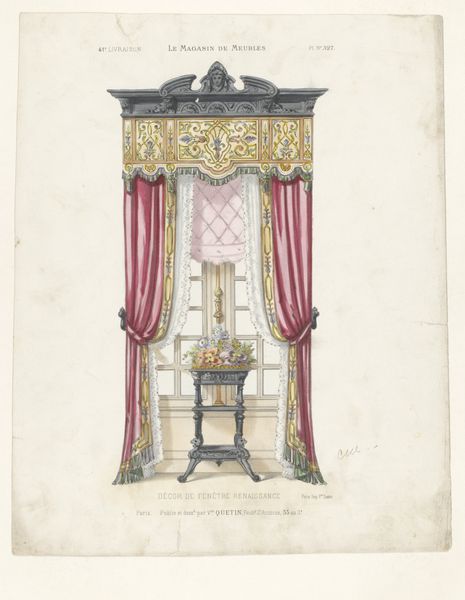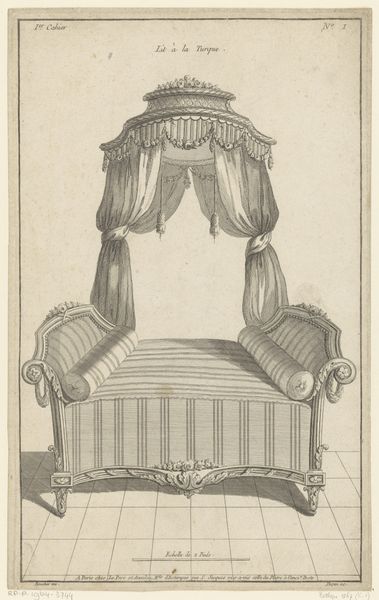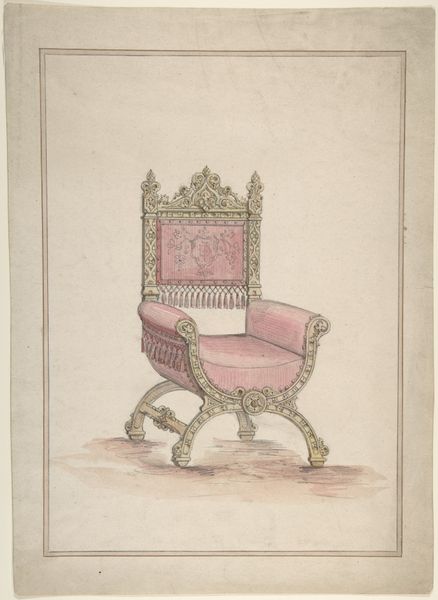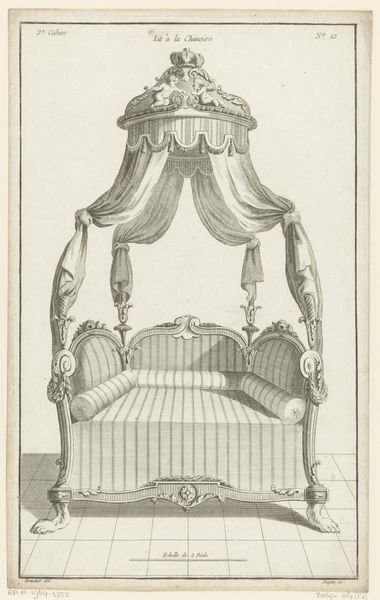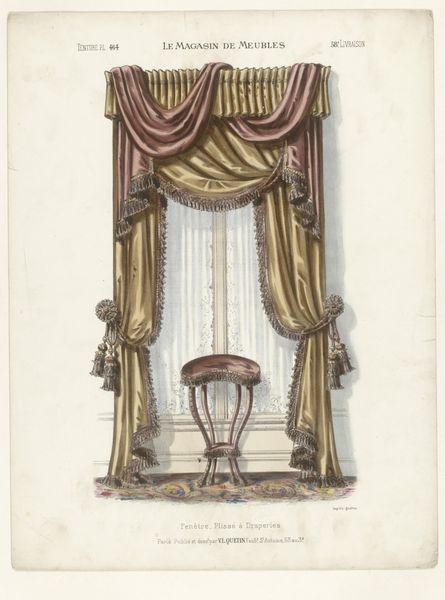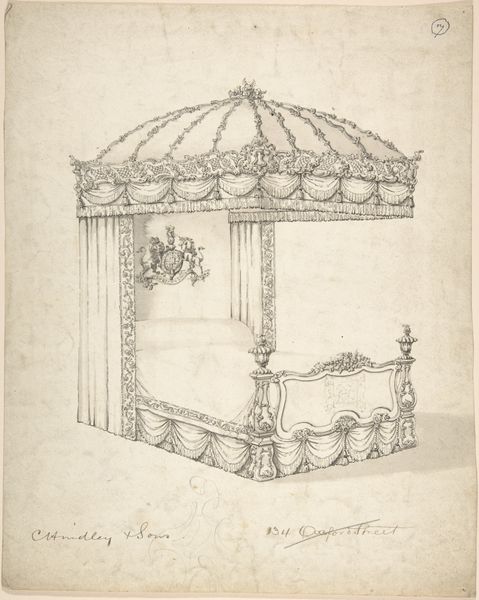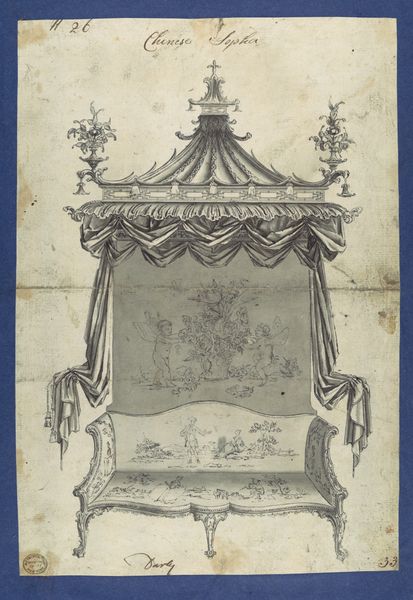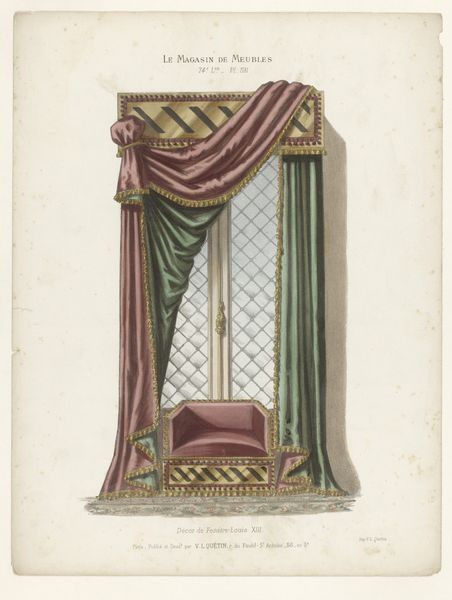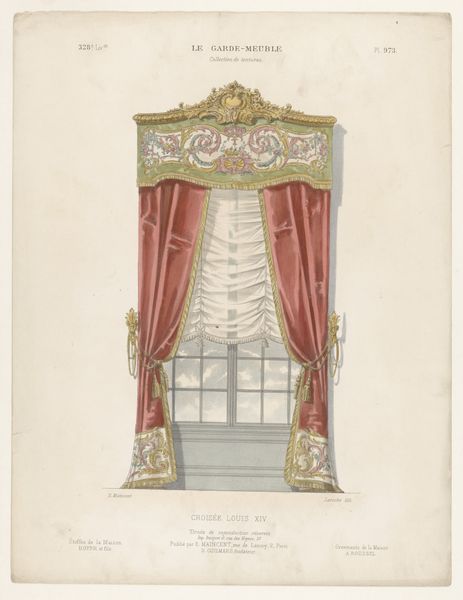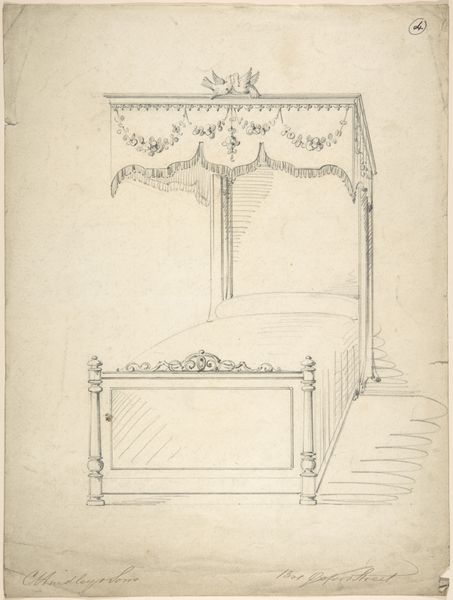
Dimensions: sheet: 8 7/16 x 5 11/16 in. (21.5 x 14.4 cm)
Copyright: Public Domain
Curator: Let’s consider this exquisite drawing, “Design for a Bed and a Canopy,” dating back to the 18th century. The anonymous creator captured this composition in watercolor and ink; it resides now at the Metropolitan Museum of Art. What is your first take? Editor: Opulence immediately springs to mind! The composition itself is quite striking with its symmetrical design and pastel palette. I also notice a curious tension between the weight of the canopy and the apparent delicacy of its frame. Curator: Note the means by which this design came to be; it speaks to a whole system of craft production. Think about the various artisans needed – the textile workers, the wood carvers, the upholsterers, all contributing to the construction of a single object that also operates as a status symbol. Editor: Absolutely. I am also curious about the form; the canopy looms quite large over the bed itself, dominating the piece. Also, the visual symmetry seems almost calculated. It also features swags and tassels and stylized finials that punctuate every corner! Curator: Precisely! It's this layering of materials and craftsmanship that makes the piece so captivating; you have to consider the origin, transportation, and economic value embedded in each element of that object; and don't forget, it signifies power! Someone was hoping to commission it for their use, indicating luxury. Editor: I would also consider that perhaps the drawing flattens certain aspects, almost highlighting the two-dimensional patterns that might be lost in a three-dimensional rendering, like those teal stripes upon the body of the bed or the curves. Curator: By looking at the structure as you say, you remove it from the system that gives it value. Can't we see this as a document in the history of labor and consumption? Editor: Of course, however, focusing on how the elements coalesce reminds me that regardless of material condition, an artisan sought to achieve some perfect version of aesthetic beauty through geometrical arrangement. It transcends its status as merely useful. Curator: Indeed! And looking at both production and arrangement allows us to understand not only how culture is built, but how design manifests across societal layers. Editor: Quite true! Together we can better admire how structures determine status and reflect someone's ambitions.
Comments
No comments
Be the first to comment and join the conversation on the ultimate creative platform.
